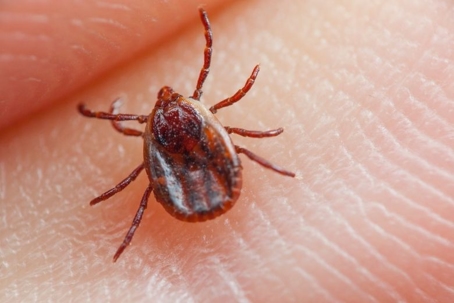What Do Dog Ticks Look Like?
Dog ticks, scientifically known as ixodid ticks, are arachnids, belonging to the same family as spiders and scorpions. Dog ticks typically have a flattened, oval-shaped body, similar to a small seed or bean. They possess several distinctive features that make them easily identifiable. Let's delve into a thorough examination of their appearance:
- Body Texture: Dog ticks possess a unique outer covering called the "cuticle," which imparts a somewhat leathery texture to their bodies. This cuticle serves as a protective layer. Beneath this outer layer, their bodies consist of various internal organs and structures necessary for survival and reproduction.
- Legs: As ticks are arachnids, they are equipped with eight legs, which is a defining characteristic distinguishing them from insects, which typically have six legs. Their legs attach to the sides of their body and allow them to move across the host animal's skin.
- Mouthparts: Dog ticks have specialized mouthparts designed for blood-feeding. Their mouthparts consist of a needle-like structure known as the "hypostome." This hypostome enables them to anchor firmly into the skin of their host while feeding. Around the hypostome, tiny backward-facing barbs are present, making it challenging to remove them once they have securely attached to their host.
How Big Are Dog Ticks?
Dog ticks vary in size depending on their species and whether they’ve fed recently. On average:
Unfed adult dog ticks (such as the American dog tick, Dermacentor variabilis) measure about 3 to 5 millimeters long—roughly the size of a sesame seed.
Engorged females (after feeding on blood) can expand dramatically to about 10 to 15 millimeters long—comparable to a small grape.
Nymphs, the immature stage, are much smaller at 1.5 to 2 millimeters, and larvae are even tinier, often less than 1 millimeter in length.
Their bodies are flat and oval when unfed, but after feeding, they become swollen and rounded.
What Color Are Dog Ticks?
Dog ticks—most commonly the American dog tick (Dermacentor variabilis) and the brown dog tick (Rhipicephalus sanguineus)—have distinct coloration that helps identify them:
American dog tick: Unfed adults are reddish-brown with ornate gray or silver markings on their backs (particularly on the scutum, the hard shield behind the head). Engorged ticks turn a grayish-blue or slate color as they fill with blood.
Brown dog tick: Unfed adults are uniformly reddish-brown with no distinct markings. Engorged individuals become a bluish-gray or dull gray-brown color after feeding.
Dog ticks appear darker when unfed and lighter or grayish once they’re engorged.
What Do Dog Tick Eggs Look Like?
- Size and Shape: Dog tick eggs are extremely small, typically measuring around 1/50 to 1/25 of an inch (0.5 to 1.0 millimeters) in diameter. They have a round to oval shape, resembling tiny, translucent or semi-transparent pearls.
- Color: When freshly laid, dog tick eggs have a whitish or creamy color. As they develop, their color may gradually change to a darker shade, often becoming a light brown or tan. This change in coloration can be attributed to the maturation of the developing embryos within the eggs.
- Texture: The surface of dog tick eggs appears smooth and somewhat glossy. They have a semi-translucent appearance, which means that you can partially see through them, although they are not entirely transparent.
- Clustering: Female dog ticks typically lay their eggs in clusters or masses. These clusters can range in size from a few dozen to several hundred eggs, depending on the species and the tick's reproductive capacity. The eggs are often held together by a sticky substance secreted by the female tick.
- Attachment: Dog tick eggs are usually attached to vegetation or other surfaces in the environment near where the female tick has fed and dropped her eggs. This attachment is facilitated by the sticky substance mentioned earlier, which helps keep the eggs in place.

